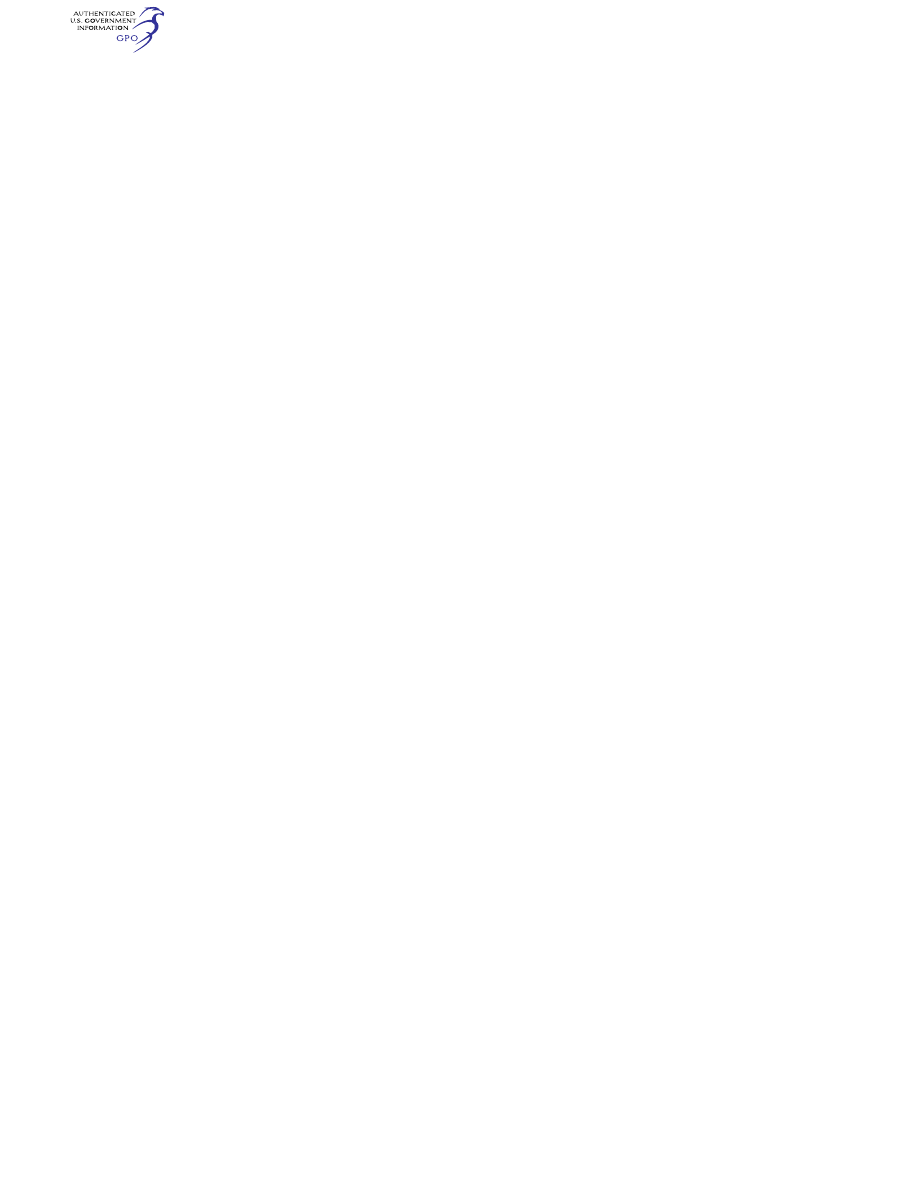
527
Federal Aviation Administration, DOT
§ 61.93
(4) In Class B, C, and D airspace, at
an airport located in Class B, C, or D
airspace, and to, from, through, or on
an airport having an operational con-
trol tower without having received the
ground and flight training specified in
§ 61.94 and an endorsement from an au-
thorized instructor;
(5) Of a light-sport aircraft without
having received the applicable ground
training, flight training, and instructor
endorsements specified in § 61.327 (a)
and (b).
(d) The holder of a student pilot cer-
tificate may act as pilot in command
of an aircraft without holding a med-
ical certificate issued under part 67 of
this chapter provided the student pilot
holds a valid U.S. driver’s license,
meets the requirements of § 61.23(c)(3),
and the operation is conducted con-
sistent with the requirements of para-
graphs (a) and (b) of this section and
the conditions of § 61.113(i). Where the
requirements of paragraphs (a) and (b)
of this section conflict with § 61.113(i), a
student pilot must comply with para-
graphs (a) and (b) of this section.
[Doc. No. 25910, 62 FR 16298, Apr. 4, 1997, as
amended by Amdt. 61–110, 69 FR 44867, July
27, 2004; Amdt. 61–125, 75 FR 5220, Feb. 1, 2010;
Docket FAA–2016–9157, Amdt. 61–140, 82 FR
3165, Jan. 11, 2017]
§ 61.91
[Reserved]
§ 61.93
Solo cross-country flight re-
quirements.
(a)
General. (1) Except as provided in
paragraph (b) of this section, a student
pilot must meet the requirements of
this section before—
(i) Conducting a solo cross-country
flight, or any flight greater than 25
nautical miles from the airport from
where the flight originated.
(ii) Making a solo flight and landing
at any location other than the airport
of origination.
(2) Except as provided in paragraph
(b) of this section, a student pilot who
seeks solo cross-country flight privi-
leges must:
(i) Have received flight training from
an instructor authorized to provide
flight training on the maneuvers and
procedures of this section that are ap-
propriate to the make and model of air-
craft for which solo cross-country
privileges are sought;
(ii) Have demonstrated cross-country
proficiency on the appropriate maneu-
vers and procedures of this section to
an authorized instructor;
(iii) Have satisfactorily accomplished
the pre-solo flight maneuvers and pro-
cedures required by § 61.87 of this part
in the make and model of aircraft or
similar make and model of aircraft for
which solo cross-country privileges are
sought; and
(iv) Comply with any limitations in-
cluded in the authorized instructor’s
endorsement that are required by para-
graph (c) of this section.
(3) A student pilot who seeks solo
cross-country flight privileges must
have received ground and flight train-
ing from an authorized instructor on
the cross-country maneuvers and pro-
cedures listed in this section that are
appropriate to the aircraft to be flown.
(b)
Authorization to perform certain
solo flights and cross-country flights. A
student pilot must obtain an endorse-
ment from an authorized instructor to
make solo flights from the airport
where the student pilot normally re-
ceives training to another location. A
student pilot who receives this en-
dorsement must comply with the re-
quirements of this paragraph.
(1) Solo flights may be made to an-
other airport that is within 25 nautical
miles from the airport where the stu-
dent pilot normally receives training,
provided—
(i) An authorized instructor has
given the student pilot flight training
at the other airport, and that training
includes flight in both directions over
the route, entering and exiting the
traffic pattern, and takeoffs and land-
ings at the other airport;
(ii) The authorized instructor who
gave the training endorses the student
pilot’s logbook authorizing the flight;
(iii) The student pilot has a solo
flight endorsement in accordance with
§ 61.87 of this part;
(iv) The authorized instructor has de-
termined that the student pilot is pro-
ficient to make the flight; and
(v) The purpose of the flight is to
practice takeoffs and landings at that
other airport.
VerDate Sep<11>2014
14:00 Mar 14, 2024
Jkt 262047
PO 00000
Frm 00537
Fmt 8010
Sfmt 8002
Q:\14\14V2.TXT
PC31
aworley on LAPBH6H6L3 with DISTILLER

528
14 CFR Ch. I (1–1–24 Edition)
§ 61.93
(2) Repeated specific solo cross-coun-
try flights may be made to another air-
port that is within 50 nautical miles of
the airport from which the flight origi-
nated, provided—
(i) The authorized instructor has
given the student flight training in
both directions over the route, includ-
ing entering and exiting the traffic pat-
terns, takeoffs, and landings at the air-
ports to be used;
(ii) The authorized instructor who
gave the training has endorsed the stu-
dent’s logbook certifying that the stu-
dent is proficient to make such flights;
(iii) The student has a solo flight en-
dorsement in accordance with § 61.87 of
this part; and
(iv) The student has a solo cross
country flight endorsement in accord-
ance with paragraph (c) of this section;
however, for repeated solo cross coun-
try flights to another airport within 50
nautical miles from which the flight
originated, separate endorsements are
not required to be made for each flight.
(c)
Endorsements for solo cross-country
flights. Except as specified in paragraph
(b)(2) of this section, a student pilot
must have the endorsements prescribed
in this paragraph for each cross-coun-
try flight:
(1) A student pilot must have a solo
cross-country endorsement from the
authorized instructor who conducted
the training that is placed in that per-
son’s logbook for the specific category
of aircraft to be flown.
(2) A student pilot must have a solo
cross-country endorsement from an au-
thorized instructor that is placed in
that person’s logbook for the specific
make and model of aircraft to be flown.
(3) For each cross-country flight, the
authorized instructor who reviews the
cross-country planning must make an
endorsement in the person’s logbook
after reviewing that person’s cross-
country planning, as specified in para-
graph (d) of this section. The endorse-
ment must—
(i) Specify the make and model of
aircraft to be flown;
(ii) State that the student’s preflight
planning and preparation is correct and
that the student is prepared to make
the flight safely under the known con-
ditions; and
(iii) State that any limitations re-
quired by the student’s authorized in-
structor are met.
(d)
Limitations on authorized instruc-
tors to permit solo cross-country flights.
An authorized instructor may not per-
mit a student pilot to conduct a solo
cross-country flight unless that in-
structor has:
(1) Determined that the student’s
cross-country planning is correct for
the flight;
(2) Reviewed the current and forecast
weather conditions and has determined
that the flight can be completed under
VFR;
(3) Determined that the student is
proficient to conduct the flight safely;
(4) Determined that the student has
the appropriate solo cross-country en-
dorsement for the make and model of
aircraft to be flown; and
(5) Determined that the student’s
solo flight endorsement is current for
the make and model aircraft to be
flown.
(e)
Maneuvers and procedures for cross-
country flight training in a single-engine
airplane. A student pilot who is receiv-
ing training for cross-country flight in
a single-engine airplane must receive
and log flight training in the following
maneuvers and procedures:
(1) Use of aeronautical charts for
VFR navigation using pilotage and
dead reckoning with the aid of a mag-
netic compass;
(2) Use of aircraft performance charts
pertaining to cross-country flight;
(3) Procurement and analysis of aero-
nautical weather reports and forecasts,
including recognition of critical weath-
er situations and estimating visibility
while in flight;
(4) Emergency procedures;
(5) Traffic pattern procedures that in-
clude area departure, area arrival,
entry into the traffic pattern, and ap-
proach;
(6) Procedures and operating prac-
tices for collision avoidance, wake tur-
bulence precautions, and windshear
avoidance;
(7) Recognition, avoidance, and oper-
ational restrictions of hazardous ter-
rain features in the geographical area
where the cross-country flight will be
flown;
VerDate Sep<11>2014
14:00 Mar 14, 2024
Jkt 262047
PO 00000
Frm 00538
Fmt 8010
Sfmt 8002
Q:\14\14V2.TXT
PC31
aworley on LAPBH6H6L3 with DISTILLER

529
Federal Aviation Administration, DOT
§ 61.93
(8) Procedures for operating the in-
struments and equipment installed in
the aircraft to be flown, including rec-
ognition and use of the proper oper-
ational procedures and indications;
(9) Use of radios for VFR navigation
and two-way communication, except
that a student pilot seeking a sport
pilot certificate must only receive and
log flight training on the use of radios
installed in the aircraft to be flown;
(10) Takeoff, approach, and landing
procedures, including short-field, soft-
field, and crosswind takeoffs, ap-
proaches, and landings;
(11) Climbs at best angle and best
rate; and
(12) Control and maneuvering solely
by reference to flight instruments, in-
cluding straight and level flight, turns,
descents, climbs, use of radio aids, and
ATC directives. For student pilots
seeking a sport pilot certificate, the
provisions of this paragraph only apply
when receiving training for cross-coun-
try flight in an airplane that has a V
H
greater than 87 knots CAS.
(f)
Maneuvers and procedures for cross-
country flight training in a multiengine
airplane. A student pilot who is receiv-
ing training for cross-country flight in
a multiengine airplane must receive
and log flight training in the following
maneuvers and procedures:
(1) Use of aeronautical charts for
VFR navigation using pilotage and
dead reckoning with the aid of a mag-
netic compass;
(2) Use of aircraft performance charts
pertaining to cross-country flight;
(3) Procurement and analysis of aero-
nautical weather reports and forecasts,
including recognition of critical weath-
er situations and estimating visibility
while in flight;
(4) Emergency procedures;
(5) Traffic pattern procedures that in-
clude area departure, area arrival,
entry into the traffic pattern, and ap-
proach;
(6) Procedures and operating prac-
tices for collision avoidance, wake tur-
bulence precautions, and windshear
avoidance;
(7) Recognition, avoidance, and oper-
ational restrictions of hazardous ter-
rain features in the geographical area
where the cross-country flight will be
flown;
(8) Procedures for operating the in-
struments and equipment installed in
the aircraft to be flown, including rec-
ognition and use of the proper oper-
ational procedures and indications;
(9) Use of radios for VFR navigation
and two-way communications;
(10) Takeoff, approach, and landing
procedures, including short-field, soft-
field, and crosswind takeoffs, ap-
proaches, and landings;
(11) Climbs at best angle and best
rate; and
(12) Control and maneuvering solely
by reference to flight instruments, in-
cluding straight and level flight, turns,
descents, climbs, use of radio aids, and
ATC directives.
(g)
Maneuvers and procedures for cross-
country flight training in a helicopter. A
student pilot who is receiving training
for cross-country flight in a helicopter
must receive and log flight training for
the following maneuvers and proce-
dures:
(1) Use of aeronautical charts for
VFR navigation using pilotage and
dead reckoning with the aid of a mag-
netic compass;
(2) Use of aircraft performance charts
pertaining to cross-country flight;
(3) Procurement and analysis of aero-
nautical weather reports and forecasts,
including recognition of critical weath-
er situations and estimating visibility
while in flight;
(4) Emergency procedures;
(5) Traffic pattern procedures that in-
clude area departure, area arrival,
entry into the traffic pattern, and ap-
proach;
(6) Procedures and operating prac-
tices for collision avoidance, wake tur-
bulence precautions, and windshear
avoidance;
(7) Recognition, avoidance, and oper-
ational restrictions of hazardous ter-
rain features in the geographical area
where the cross-country flight will be
flown;
(8) Procedures for operating the in-
struments and equipment installed in
the aircraft to be flown, including rec-
ognition and use of the proper oper-
ational procedures and indications;
(9) Use of radios for VFR navigation
and two-way communications; and
(10) Takeoff, approach, and landing
procedures.
VerDate Sep<11>2014
14:00 Mar 14, 2024
Jkt 262047
PO 00000
Frm 00539
Fmt 8010
Sfmt 8002
Q:\14\14V2.TXT
PC31
aworley on LAPBH6H6L3 with DISTILLER

530
14 CFR Ch. I (1–1–24 Edition)
§ 61.93
(h)
Maneuvers and procedures for cross-
country flight training in a gyroplane. A
student pilot who is receiving training
for cross-country flight in a gyroplane
must receive and log flight training in
the following maneuvers and proce-
dures:
(1) Use of aeronautical charts for
VFR navigation using pilotage and
dead reckoning with the aid of a mag-
netic compass;
(2) Use of aircraft performance charts
pertaining to cross-country flight;
(3) Procurement and analysis of aero-
nautical weather reports and forecasts,
including recognition of critical weath-
er situations and estimating visibility
while in flight;
(4) Emergency procedures;
(5) Traffic pattern procedures that in-
clude area departure, area arrival,
entry into the traffic pattern, and ap-
proach;
(6) Procedures and operating prac-
tices for collision avoidance, wake tur-
bulence precautions, and windshear
avoidance;
(7) Recognition, avoidance, and oper-
ational restrictions of hazardous ter-
rain features in the geographical area
where the cross-country flight will be
flown;
(8) Procedures for operating the in-
struments and equipment installed in
the aircraft to be flown, including rec-
ognition and use of the proper oper-
ational procedures and indications;
(9) Use of radios for VFR navigation
and two-way communication, except
that a student pilot seeking a sport
pilot certificate must only receive and
log flight training on the use of radios
installed in the aircraft to be flown;
and
(10) Takeoff, approach, and landing
procedures, including short-field and
soft-field takeoffs, approaches, and
landings.
(i)
Maneuvers and procedures for cross-
country flight training in a powered-lift.
A student pilot who is receiving train-
ing for cross-country flight training in
a powered-lift must receive and log
flight training in the following maneu-
vers and procedures:
(1) Use of aeronautical charts for
VFR navigation using pilotage and
dead reckoning with the aid of a mag-
netic compass;
(2) Use of aircraft performance charts
pertaining to cross-country flight;
(3) Procurement and analysis of aero-
nautical weather reports and forecasts,
including recognition of critical weath-
er situations and estimating visibility
while in flight;
(4) Emergency procedures;
(5) Traffic pattern procedures that in-
clude area departure, area arrival,
entry into the traffic pattern, and ap-
proach;
(6) Procedures and operating prac-
tices for collision avoidance, wake tur-
bulence precautions, and windshear
avoidance;
(7) Recognition, avoidance, and oper-
ational restrictions of hazardous ter-
rain features in the geographical area
where the cross-country flight will be
flown;
(8) Procedures for operating the in-
struments and equipment installed in
the aircraft to be flown, including rec-
ognition and use of the proper oper-
ational procedures and indications;
(9) Use of radios for VFR navigation
and two-way communications;
(10) Takeoff, approach, and landing
procedures that include high-altitude,
steep, and shallow takeoffs, ap-
proaches, and landings; and
(11) Control and maneuvering solely
by reference to flight instruments, in-
cluding straight and level flight, turns,
descents, climbs, use of radio aids, and
ATC directives.
(j)
Maneuvers and procedures for cross-
country flight training in a glider. A stu-
dent pilot who is receiving training for
cross-country flight in a glider must
receive and log flight training in the
following maneuvers and procedures:
(1) Use of aeronautical charts for
VFR navigation using pilotage and
dead reckoning with the aid of a mag-
netic compass;
(2) Use of aircraft performance charts
pertaining to cross-country flight;
(3) Procurement and analysis of aero-
nautical weather reports and forecasts,
including recognition of critical weath-
er situations and estimating visibility
while in flight;
(4) Emergency procedures;
(5) Traffic pattern procedures that in-
clude area departure, area arrival,
entry into the traffic pattern, and ap-
proach;
VerDate Sep<11>2014
14:00 Mar 14, 2024
Jkt 262047
PO 00000
Frm 00540
Fmt 8010
Sfmt 8002
Q:\14\14V2.TXT
PC31
aworley on LAPBH6H6L3 with DISTILLER

531
Federal Aviation Administration, DOT
§ 61.93
(6) Procedures and operating prac-
tices for collision avoidance, wake tur-
bulence precautions, and windshear
avoidance;
(7) Recognition, avoidance, and oper-
ational restrictions of hazardous ter-
rain features in the geographical area
where the cross-country flight will be
flown;
(8) Procedures for operating the in-
struments and equipment installed in
the aircraft to be flown, including rec-
ognition and use of the proper oper-
ational procedures and indications;
(9) Landings accomplished without
the use of the altimeter from at least
2,000 feet above the surface; and
(10) Recognition of weather and upper
air conditions favorable for cross-coun-
try soaring, ascending and descending
flight, and altitude control.
(k)
Maneuvers and procedures for cross-
country flight training in an airship. A
student pilot who is receiving training
for cross-country flight in an airship
must receive and log flight training for
the following maneuvers and proce-
dures:
(1) Use of aeronautical charts for
VFR navigation using pilotage and
dead reckoning with the aid of a mag-
netic compass;
(2) Use of aircraft performance charts
pertaining to cross-country flight;
(3) Procurement and analysis of aero-
nautical weather reports and forecasts,
including recognition of critical weath-
er situations and estimating visibility
while in flight;
(4) Emergency procedures;
(5) Traffic pattern procedures that in-
clude area departure, area arrival,
entry into the traffic pattern, and ap-
proach;
(6) Procedures and operating prac-
tices for collision avoidance, wake tur-
bulence precautions, and windshear
avoidance;
(7) Recognition, avoidance, and oper-
ational restrictions of hazardous ter-
rain features in the geographical area
where the cross-country flight will be
flown;
(8) Procedures for operating the in-
struments and equipment installed in
the aircraft to be flown, including rec-
ognition and use of the proper oper-
ational procedures and indications;
(9) Use of radios for VFR navigation
and two-way communication, except
that a student pilot seeking a sport
pilot certificate must only receive and
log flight training on the use of radios
installed in the aircraft to be flown;
(10) Control of air pressure with re-
gard to ascending and descending flight
and altitude control;
(11) Control of the airship solely by
reference to flight instruments, except
for a student pilot seeking a sport pilot
certificate; and
(12) Recognition of weather and upper
air conditions conducive for the direc-
tion of cross-country flight.
(l)
Maneuvers and procedures for cross-
country flight training in a powered para-
chute. A student pilot who is receiving
training for cross-country flight in a
powered parachute must receive and
log flight training in the following ma-
neuvers and procedures:
(1) Use of aeronautical charts for
VFR navigation using pilotage and
dead reckoning with the aid of a mag-
netic compass, as appropriate.
(2) Use of aircraft performance charts
pertaining to cross-country flight.
(3) Procurement and analysis of aero-
nautical weather reports and forecasts,
including recognizing critical weather
situations and estimating visibility
while in flight.
(4) Emergency procedures.
(5) Traffic pattern procedures that in-
clude area departure, area arrival,
entry into the traffic pattern, and ap-
proach.
(6) Procedures and operating prac-
tices for collision avoidance, wake tur-
bulence precautions, and windshear
avoidance.
(7) Recognition, avoidance, and oper-
ational restrictions of hazardous ter-
rain features in the geographical area
where the cross-country flight will be
flown.
(8) Procedures for operating the in-
struments and equipment installed in
the aircraft to be flown, including rec-
ognition and use of the proper oper-
ational procedures and indications.
(9) If equipped for flight with naviga-
tion radios, the use of radios for VFR
navigation.
(10) Recognition of weather and upper
air conditions favorable for the cross-
country flight.
VerDate Sep<11>2014
14:00 Mar 14, 2024
Jkt 262047
PO 00000
Frm 00541
Fmt 8010
Sfmt 8002
Q:\14\14V2.TXT
PC31
aworley on LAPBH6H6L3 with DISTILLER

532
14 CFR Ch. I (1–1–24 Edition)
§ 61.94
(11) Takeoff, approach and landing
procedures.
(m)
Maneuvers and procedures for
cross-country flight training in a weight-
shift-control aircraft. A student pilot
who is receiving training for cross-
country flight in a weight-shift-control
aircraft must receive and log flight
training for the following maneuvers
and procedures:
(1) Use of aeronautical charts for
VFR navigation using pilotage and
dead reckoning with the aid of a mag-
netic compass, as appropriate.
(2) Use of aircraft performance charts
pertaining to cross-country flight.
(3) Procurement and analysis of aero-
nautical weather reports and forecasts,
including recognizing critical weather
situations and estimating visibility
while in flight.
(4) Emergency procedures.
(5) Traffic pattern procedures that in-
clude area departure, area arrival,
entry into the traffic pattern, and ap-
proach.
(6) Procedures and operating prac-
tices for collision avoidance, wake tur-
bulence precautions, and windshear
avoidance.
(7) Recognition, avoidance, and oper-
ational restrictions of hazardous ter-
rain features in the geographical area
where the cross-country flight will be
flown.
(8) Procedures for operating the in-
struments and equipment installed in
the aircraft to be flown, including rec-
ognition and use of the proper oper-
ational procedures and indications.
(9) If equipped for flight using navi-
gation radios, the use of radios for VFR
navigation.
(10) Recognition of weather and upper
air conditions favorable for the cross-
country flight.
(11) Takeoff, approach and landing
procedures, including crosswind ap-
proaches and landings.
[Doc. No. 25910, 62 FR 16298, Apr. 4, 1997;
Amdt. 61–103, 62 FR 40902, July 30, 1997;
Amdt. 61–110, 69 FR 44867, July 27, 2004;
Amdt. 61–124, 74 FR 42557, Aug. 21, 2009;
Amdt. 61–125, 75 FR 5220, Feb. 1, 2010; Docket
FAA–2010–1127, Amdt. 61–135, 81 FR 1306, Jan.
12, 2016]
§ 61.94
Student pilot seeking a sport
pilot certificate or a recreational
pilot certificate: Operations at air-
ports within, and in airspace lo-
cated within, Class B, C, and D air-
space, or at airports with an oper-
ational control tower in other air-
space.
(a) A student pilot seeking a sport
pilot certificate or a recreational pilot
certificate who wants to obtain privi-
leges to operate in Class B, C, and D
airspace, at an airport located in Class
B, C, or D airspace, and to, from,
through, or at an airport having an
operational control tower, must re-
ceive and log ground and flight train-
ing from an authorized instructor in
the following aeronautical knowledge
areas and areas of operation:
(1) The use of radios, communica-
tions, navigation systems and facili-
ties, and radar services.
(2) Operations at airports with an op-
erating control tower, to include three
takeoffs and landings to a full stop,
with each landing involving a flight in
the traffic pattern, at an airport with
an operating control tower.
(3) Applicable flight rules of part 91
of this chapter for operations in Class
B, C, and D airspace and air traffic con-
trol clearances.
(4) Ground and flight training for the
specific Class B, C, or D airspace for
which the solo flight is authorized, if
applicable, within the 90-day period
preceding the date of the flight in that
airspace. The flight training must be
received in the specific airspace area
for which solo flight is authorized.
(5) Ground and flight training for the
specific airport located in Class B, C, or
D airspace for which the solo flight is
authorized, if applicable, within the 90-
day period preceding the date of the
flight at that airport. The flight and
ground training must be received at
the specific airport for which solo
flight is authorized.
(b) The authorized instructor who
provides the training specified in para-
graph (a) of this section must provide a
logbook endorsement that certifies the
student has received that training and
is proficient to conduct solo flight in
that specific airspace or at that spe-
cific airport and in those aeronautical
VerDate Sep<11>2014
14:00 Mar 14, 2024
Jkt 262047
PO 00000
Frm 00542
Fmt 8010
Sfmt 8002
Q:\14\14V2.TXT
PC31
aworley on LAPBH6H6L3 with DISTILLER





